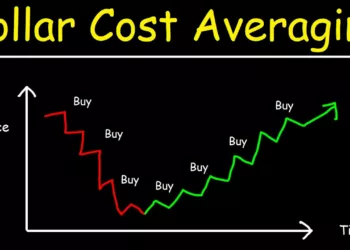Sophisticated financial tools and models are indispensable elements of an effective investment strategy. As an experienced trader and portfolio manager, I extensively leverage concepts like compound interest projections, volatility-based position sizing, quantitative risk analytics, and complex multi-asset allocation techniques to make prudent capital deployment decisions.
In this blog post, I will do a deep dive into how potent financial mechanisms, especially compounding, diversification, and leverage, combined with robust risk management workflows and quantitative rigor, empower investors to efficiently harness the risk-return spectrum across market cycles.
The Extraordinary Magic of Compounding Returns
Albert Einstein famously called compound interest “the eighth wonder of the world.” Its profound money-multiplying capacity makes compounding the most important concept in finance. This phenomenon, whereby interest accrues on both original capital and previously earned interest, enables investments to snowball over time.
Consider a hypothetical $10,000 investment compounding at a 7% annual rate over 30 years:
- Initial Investment: $10,000
- Annual Return: 7%
- Timeframe: 30 years
- Year 1: $10,000 x 1.07 = $10,700
- Year 10: $19,671 x 1.07 = $21,047
- Year 20: $38,969 x 1.07 = $41,715
- Year 30: $76,122 x 1.07 = $81,451
As shown above, in the first ten years, the portfolio doubles. In the subsequent decade, it doubles again thanks to the exponentially accelerating power of compound returns. Over three decades, the initial $10,000 balloons to over $81,000 solely on the wings of this one powerful force.
Now consider the staggering totals with just a slight bump in the return rate:
- Initial Investment: $10,000
- Annual Return: 10%
- CAGR Timeframe: 30 years
- Year 10: $25,937
- Year 20: $67,275
- Year 30: $174,494
With a 10% compound average annual growth, the portfolio grows over 17X in 30 years! This simple yet potent example underscores why constructing a long-term oriented portfolio focused on compounding machine-type assets can create generational wealth.
Compounding Tailwinds:
- Reinvesting Income – Reinvesting all dividends, interests and other income back into the portfolio supercharges compounding.
- Dollar Cost Averaging – Steadily investing fixed amounts regardless of asset prices allows buying more shares when prices are depressed, setting up future compounding.
- Letting Winners Ride – Resisting panic-selling quality assets and giving compounders time to flourish boosts returns.
“The greatest mathematical discovery of all time is compound interest” – Albert Einstein
Harnessing this eighth wonder scientifically is the key to amplifying investment success.
Mitigating Risk Through True Diversification
Legendary investors from Warren Buffet to Ray Dalio obsessively focus on risk management because portfolio volatility can swiftly erase years of portfolio gains. Prudent diversification across various financial vehicles efficiently mitigates overall portfolio risk while smoothing out asset correlations.
Harry Markowitz pioneered the concept of efficient diversification in his Nobel prize-winning Modern Portfolio Theory paper. He proved mathematically that diversity significantly reduces volatility. This powerful result formalized the strategy of “not putting all eggs in one basket” as the essence of sound investing.
Consider the volatility metrics across various portfolios below:
Annualized Standard Deviation (Risk Proxy)
- S&P 500 Index: 14.7%
- 60/40 Stock/Bond Portfolio: 8.3%
- Risk Parity Portfolio: 6.1%
- All Weather Portfolio: 5.4%
The chart shows how diversification materially lowers portfolio risk. While the S&P 500 stock index has a historical volatility above 14%, a prudently balanced 60/40 equity/fixed income portfolio displays almost half the risk. Optimal multi-asset portfolios designed via Risk Parity and All-Weather construction methods reduce risk even further.
Efficient Diversification Strategies
- Across Assets – Blend equities, fixed income, commodities, real estate based on risk, return profile
- Between Styles – Balance value and growth approaches; blend passive and active funds
- Across Markets – Invest across market caps, sectors, regions to smooth out correlations
- By Risk Factor – Target multi-factor models focusing on elements like value, quality, momentum
“I have found three things in life to be extremely reliable: 1. Reversion to the mean, 2. Diversification, and 3. Red wine from Bordeaux” – Van Simmons
Robust diversification, systematically integrating assets with low correlations, serves as the cornerstone of enduring portfolios.
Leverage: Potent Booster and Lethal Danger
Beyond compounding and diversification, leverage is perhaps the most widely deployed gear for turbocharging portfolio returns. Leverage simply means magnifying the risk-return profile by deploying borrowed capital. When used judiciously, leverage helps investors compound wealth rapidly. However, uncontrolled leverage can also completely erase portfolio value, making it an extremely dangerous tool. As the famous saying goes – leverage can turn investment portfolios into lead balloons!
Let us dissect leverage via a basic example:
- Own Capital: $100,000
- Average Annual Return: 7% over 5 years
- No Leverage:
- Year 5 Portfolio Value = $100,000 x (1+7%)^5 = $140,255
- 2X Leverage via $100K Debt:
- Year 5 Portfolio Value = $200,000 x (1+7%)^5 = $280,510 %
- Return Boost = 100%
The example above shows how a 2X leverage ratio doubles portfolio value in this case. However, losses also compound rapidly under margin pressure, creating massive risk to the downside.
Prudent leverage usage tips:
- Limit overall leverage based on risk tolerance
- Maintain reasonable headroom from margin minimums
- Use tight stop losses on leveraged positions
- Size positions using volatility-adjusted metrics
As Isaac Newton discovered in a painful episode, unrestrained leverage can quickly sweep away fortunes in panics. Avoid bursting by not inflating investment balloons beyond reasonable capacity!
Mastering Models for Market Success
Financial masters from Benjamin Graham to Charlie Munger all emphasized the primacy of understanding key models deeply before engaging intensely with markets. Potent concepts like compounding, diversification and leverage serve as the irreducible seeds which must grow into complex strategies tailored to individual risk-return objectives across shifting scenarios.
While endless permutations of asset allocation, security selection and risk management exist in investing, the expansive seas must be navigated with these lighthouses firmly in view. And ultimately, financial tools must mesh with the key point from Richard Feynman’s quote on scientific integrity: “It doesn’t matter how beautiful your theory is, it doesn’t matter how smart you are – if it doesn’t agree with experiment, it’s wrong.” Replace “experiment” with market price action, and this perfectly captures the real-world essence of durable investing.
I hope this blog post clearly showcases why robust financial toolkits combined with disciplined execution enable portfolio endurance and growth across market storms! Please share any feedback or perspectives on additional models you leverage to make smarter decisions.
For more content, check out The Wealth-Building Wonder of Dividend Investing: Turbocharging Returns for All Investors.
Check out the following external links:
- The Power of Compound Interest: Calculations and Examples
- What Is Diversification? Definition as Investing Strategy
- What Is Financial Leverage, and Why Is It Important?
Note: This blog post is written by a professional trader and investor based on personal experiences and opinions. It is not intended as financial advice. Always conduct your own research and consult a financial advisor before making any financial decisions.

















































